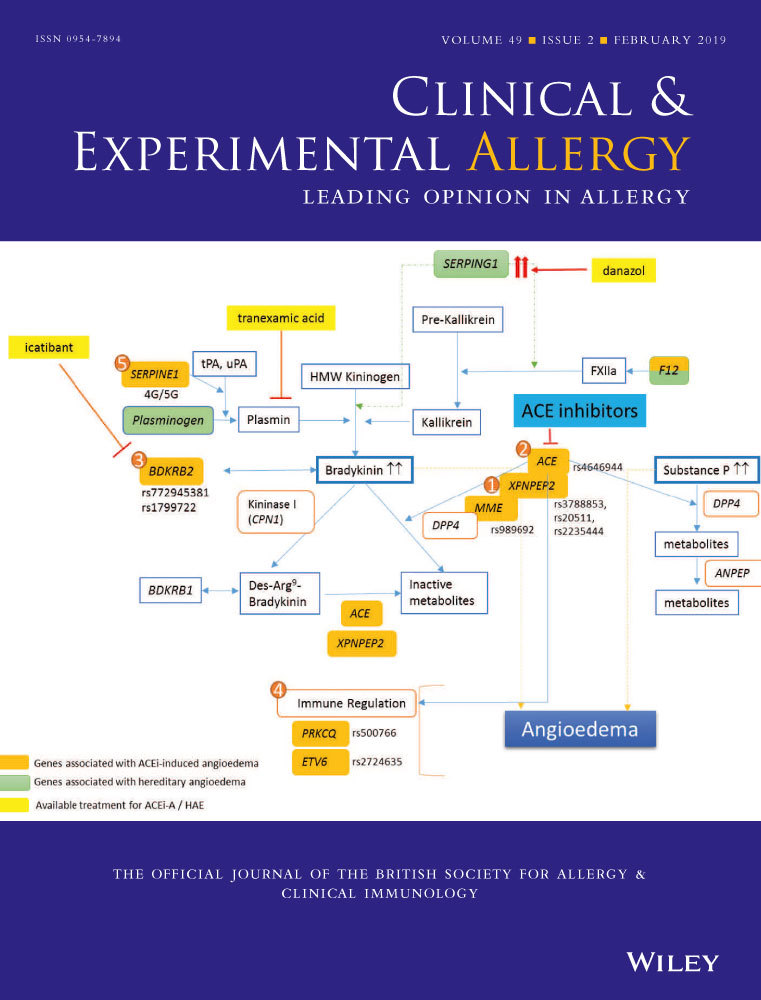Fixed airflow obstruction relates to eosinophil activation in asthmatics
Funding Information
EU FP6 project GA(2)LEN, Grant/Award Number: FOOD-CT-2004-506378; Karolinska Institutet; The Swedish Heart Lung Foundation; Swedish Research Council; the Vårdal Foundation; Stockholm County Council; Swedish Asthma and Allergy Association; Swedish Foundation for Strategic Research; Konsul Th C Berghs Foundation; the Karolinska Institutet SciLifeLab Collaborations on Translational Medicine (ChAMP) project. IM was funded through the U4 network.
Summary
Background
Some asthmatics develop irreversible chronic airflow obstruction, for example, fixed airflow obstruction (fixed-AO). This is probably a consequence of airway remodelling, but neither its relation to inflammation nor which asthma biomarkers can be clinically useful are elucidated. We hypothesized that the presence of type 2 inflammation relates to fixed-AO.
Objectives
To evaluate the presence of four markers for type 2 inflammation in fixed airflow obstruction among asthmatics.
Methods
This was a cross-sectional study of 403 participants with asthma, aged 17-75 years, from three Swedish centres. Fixed airflow obstruction was defined as forced expiratory volume during the first second (FEV1) over forced vital capacity (FVC) being below the lower limit of normal (LLN). The following type 2 inflammation markers were assessed: exhaled nitric oxide (FeNO), serum periostin, serum eosinophil cationic protein (S-ECP), and urinary eosinophil-derived neurotoxin (U-EDN).
Results
Elevated U-EDN (values in the highest tertile, ≥65.95 mg/mol creatinine) was more common in subjects with fixed-AO vs. subjects without fixed-AO: 55% vs. 29%, P < 0.001. Elevated U-EDN related to increased likelihood of having fixed-AO in both all subjects and never-smoking subjects, with adjusted (adjusted for sex, age group, use of inhaled corticosteroids last week, atopy, early-onset asthma, smoking history, and packyears) odds ratios (aOR) of 2.38 (1.28-4.41) and 2.51 (1.04-6.07), respectively. In a separate analysis, having both elevated S-ECP (>20 μg/L) and U-EDN was related to having the highest likelihood of fixed-AO (aOR (95% CI) 6.06 (2.32-15.75)). Elevated serum periostin or FeNO did not relate to fixed-AO.
Conclusions and clinical relevance
These findings support that type 2 inflammation, and in particular eosinophil inflammation, is found in asthma with fixed-AO. This could indicate a benefit from eosinophil-directed therapies. Further longitudinal studies are warranted to investigate causality and relation to lung function decline.
CONFLICT OF INTEREST
KI has received funds for research from Shino-test Co. Ltd. KA is a former employee of Aerocrine AB and has received research material from Thermo Fisher Scientific. MB is employed by Thermo Fisher Scientific and Uppsala University.




